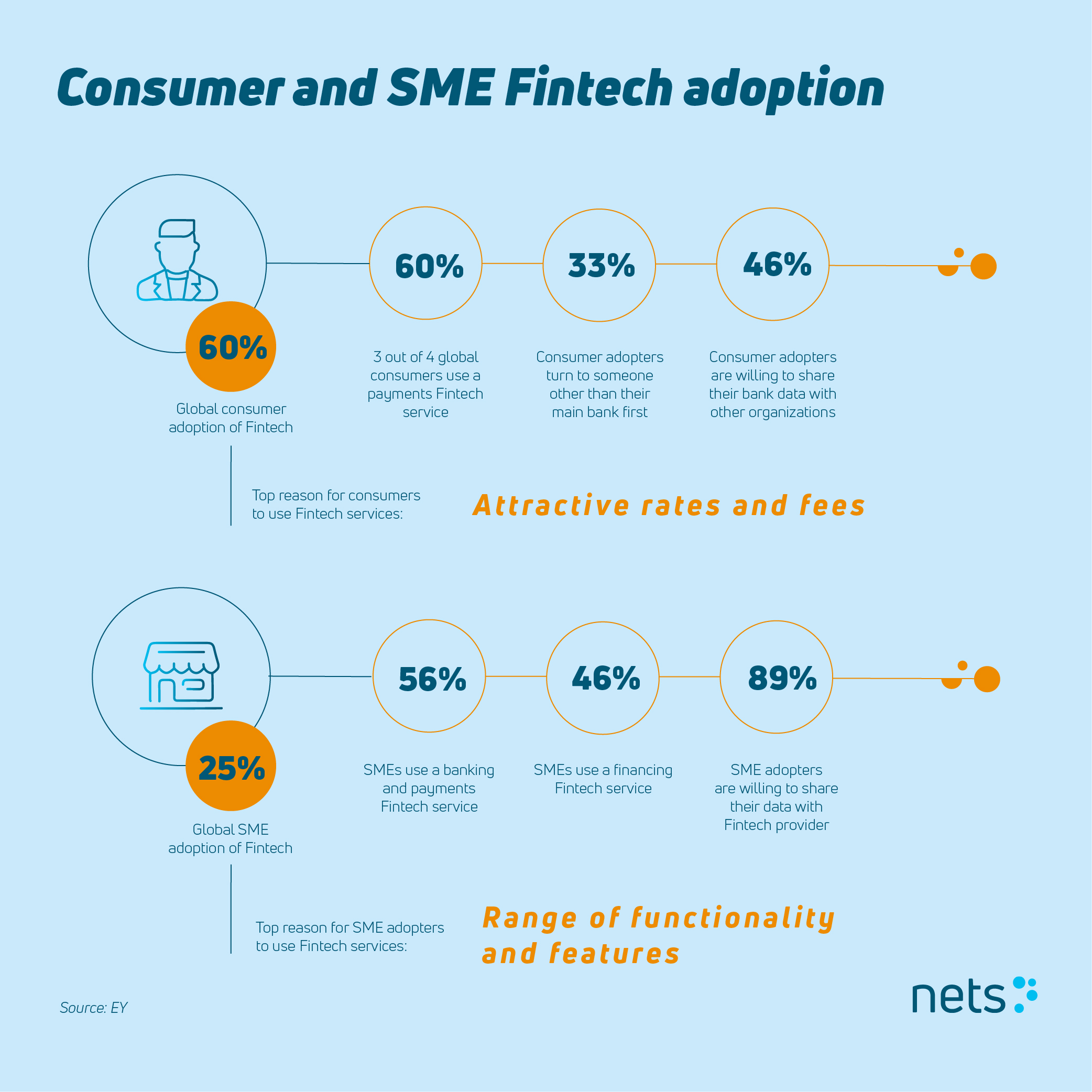Intesa Sanpaolo, one of the largest and most successful banking groups in Europe, is doing exactly this – driving the digital strategy externally and internally with Maurice Lisi in the dynamic center. The Group's innovation agenda is based on
changing the internal company culture and the next important milestone would be redefining and redesigning the organisation to be more future-proof and sustainable when it comes to change. Lisi stresses the importance of creating value internally by creating a fintech and innovative mindset to deliver value to customers.
A shift from branch to customer experience
Fintechs emerged around 2015 and were going after the banking sector. They have mostly focused on alleviating the friction in the specific issues existing in the payment industry, such as cross-border transactions, and their solutions included improving the customer experience. The fintechs that excelled in delivering a great customer experience made experience itself the product and that is what disrupted the banking sector. According to Maurice Lisi banks should be thankful because fintechs made an incredible push on the incumbent environment to focus more on delivering the customer experience.

Another event that pushed banks to advance digitalization strategy is COVID-19. The
pandemic has shifted the consumer behaviour towards buying and paying via e-commerce and contactless payment methods which rushed banks to introduce new digital products and services to improve the customer experience.
What makes Intesa Sanpaolo successful and trusted by consumers all over the world is exactly the approach they have in delivering the consumer experience – the combination of technology and human
Being completely aware of that,
Intesa Sanpaolo are striving to deliver the whole ecosystem for the consumer's convenience and not just pieces of a technology puzzle, as Maurice Lisi calls it. People look for human interaction and advice when they go to the bank or want a mortgage or a loan which are life changing decisions that require more than a chatbot or a robo-advisor. Banks need to provide that human touch to the customer experience to win the customer's trust for example through video banking which Intesa has put in place to allow customers to have remote contact with their relationship manager.
Tech giants own consumer data
Even though smaller fintechs are disrupting the banking environment they are still not a threat for banks when it comes to share of customers. However, Google, Amazon, Facebook and Apple, also known by the acronym GAFA, are starting to overtake the ownership of the consumer experience in the payment field, as Maurice Lisi pointed out. Their aim may not be to become banks, but they are going to disintermediate the customer with the bank. For example
Google has already stepped into the bank account field in collaboration with Citi Bank and Apple has issued the
Apple Card for payments.
This view is also shared by, Sulabh Agarwal, Accenture’s global payments lead, as quoted by CNBC. Agarwal said that it doesn’t make much sense for the tech giants to become banks:

